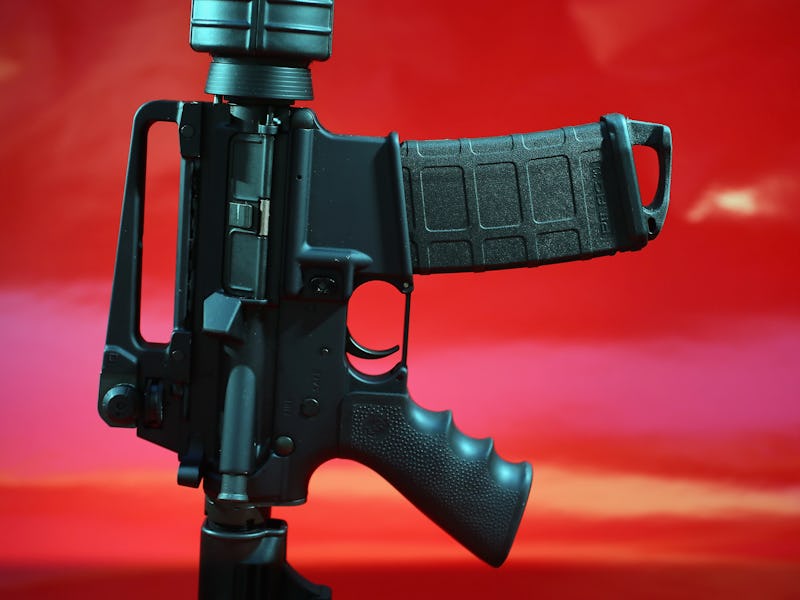The AR-15 Used in Orlando Shooting Is "America's Most Popular Rifle"
At least 5 million AR-15s have been sold in the USA.

The Orlando massacre that stole the lives of 49 people at the Pulse nightclub has drawn renewed attention to the AR-15, a popular and powerful assault rifle. The Bureau of Alcohol, Tobacco, Firearms and Explosives announced the weapons used by Omar Mateen, the only suspect in the shooting, were the “.223 caliber AR type rifle and 9mm semiautomatic pistol.”
At least five million Americans own a version of the AR-15, with a total of between five and ten million rifles currently in the hands of legal gun owners in the United States.
The prominence of the AR-15 in recent mass shootings, including Sandy Hook, San Bernardino, and Aurora, Colorado, has earned the weapon an unenviable iconography as the weapon of choice for mass murderers. Gun control advocates frequently cite the AR-15 as the central reason why the 1995 ban on assault rifles, which Congress allowed to lapse in 2005, should be reinstated. Despite being commercially available for little over 10 years, the weapon has earned a prominent place in weapons marketing and the national consciousness.
Bullets for an AR-15, .233 or 5.56 caliber, the same gun used by Omar Mateen.
The National Rifle Association describes the AR-15 as “America’s most popular rifle.” It is billed as an all-around weapon, useful for sporting, hunting, and self-defense. Advocates say the handful of examples of mass shootings committed with the weapon should not cast aspersions on the millions of lawful owners. At prices ranging from about $600 to over $1,000, the gun is affordable for first-time assault rifle buyers. It is also popularly associated with the American military due to its similarity to the M-16.
Mateen legally obtained both the assault rifle and the pistol used in the attack just a week before the shooting itself. In Florida, first-time gun owners are allowed to walk into a gun shop and buy an AR-15 without a license as long as they fill out an ID-form and pay $8 for a background check that screens out convicted felons, domestic abusers, and those formally deemed mentally unfit.
Matten had previously been investigated by the FBI on two occasions for suspected links to terrorist organizations, but law enforcement agencies are not empowered to place suspects on a no-gun list in the same way as the no-fly list, despite President Obama’s urging. A video of Obama explaining the policy has gone viral in the days after the Orlando shooting. In it, Obama says:
I just came from a meeting today in the Situation Room in which I’ve got people who we know have been on ISIL websites, living here in the United States, U.S. citizens, and we’re allowed to put them on the “No fly” list when it comes to airlines.
But because of the National Rifle Association, I cannot prohibit those people from buying a gun.
This is somebody who is a known ISIL sympathiser.
And if he wants to walk into a gun store or gun show right now and buy as many weapons and ammo as he can, nothing’s prohibiting him from doing that, even though the FBI knows who that person is.
With millions of Americans everyday possessing and using the AR-15 without causing harm to themselves or others, it’s little surprise the debate has generated such vitriol. But considering the extent and frequency of the deaths, particularly in mass shootings related to the AR-15, few imagine the debate simmering anytime soon. Both Hillary Clinton and Donald Trump have described radically divergent views of gun control, and the issue will likely play a role in the November general election, as it should.